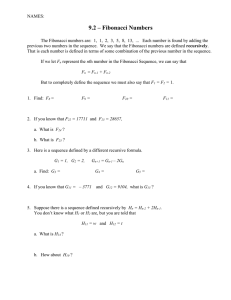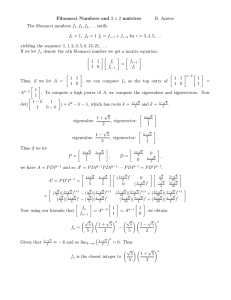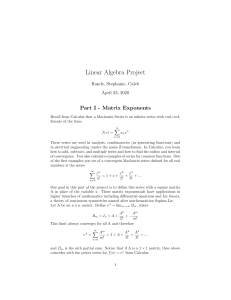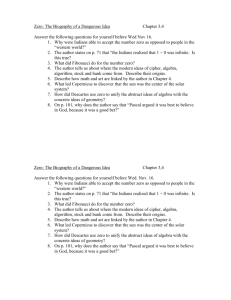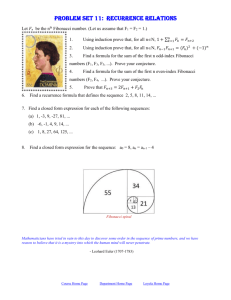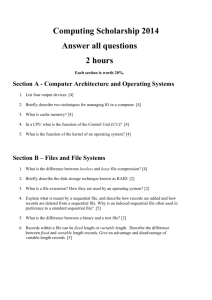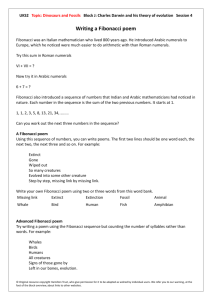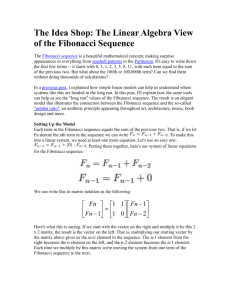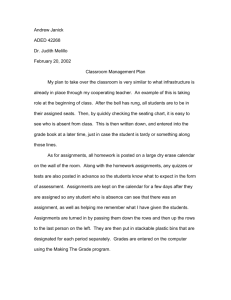Discrete Dynamical Fibonacci
advertisement
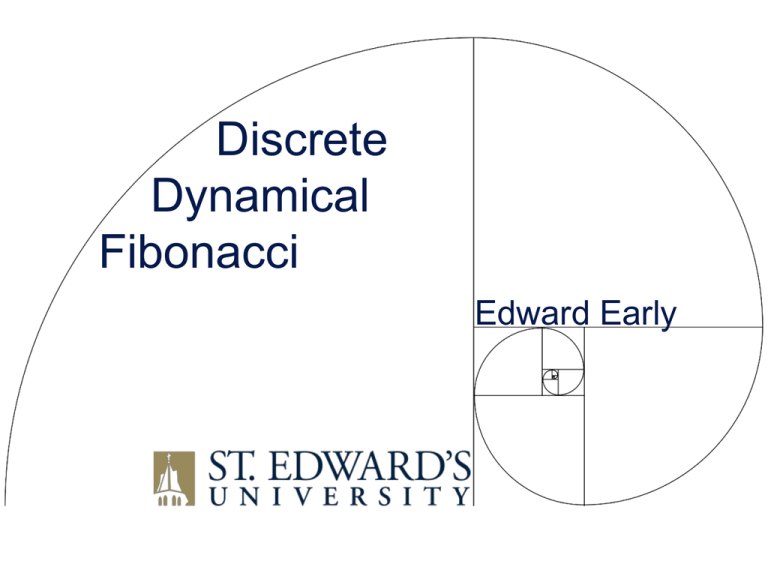
Discrete Dynamical Fibonacci Edward Early Fibonacci Numbers • F0 = 0, F1 = 1, Fn = Fn-1+Fn-2 for n > 1 • 0, 1, 1, 2, 3, 5, 8, 13, 21, 34, 55, 89, 144, … 1 5 1 5 2 2 5 n Fn 1 n Differential Equations • inspired by undetermined coefficients • Fn = Fn-1+Fn-2 characteristic polynomial x2-x-1 • formula C 1 5 C 1 5 n 1 2 n 2 2 • initial conditions F0 = 0, F1 = 1 give C1 and C2 • BIG DRAWBACK: students were already taking undetermined coefficients on faith (and this application not in book) Linear Algebra • discrete dynamical systems • A n x 0 c1 1n v 1 c 2 2n v 2 where λ1 and λ2 are the (distinct) eigenvalues of the 2×2 matrix A with eigenvectors v1 and v2, respectively, and x0=c1v1+c2v2 (Section 5.6 of Lay’s book) Linear Algebra Meets Fibonacci • Let 0 1 0 A 1 1 1 0 F0 and x 0 1 F1 Fn 1 Fn 1 Fn F F F F 1 n n 1 n n 1 • Thus Anx0 has top entry Fn Linear Algebra Meets Fibonacci • Let 0 A 1 1 1 0 and x 0 1 • det(A-λI) = λ2-λ-1 • eigenvalues 1 • eigenvectors 1 5 2 and 1 1 5 2 and 5 2 1 1 5 2 Linear Algebra Meets Fibonacci • Let 0 A 1 1 1 and 1 1 0 1 x0 1 5 1 5 1 5 2 2 n 1 1 1 n 1 5 n 1 1 5 n A x 0 c1 1 v 1 c 2 2 v 21 5 1 5 5 2 5 2 2 2 n • top entry n n 1 5 1 1 5 Fn 2 5 2 Caveat • If 1 x0 1 then… 1 1 5 5 5 5 x0 1 5 1 5 10 10 2 2 • ugly enough to scare off most students!
